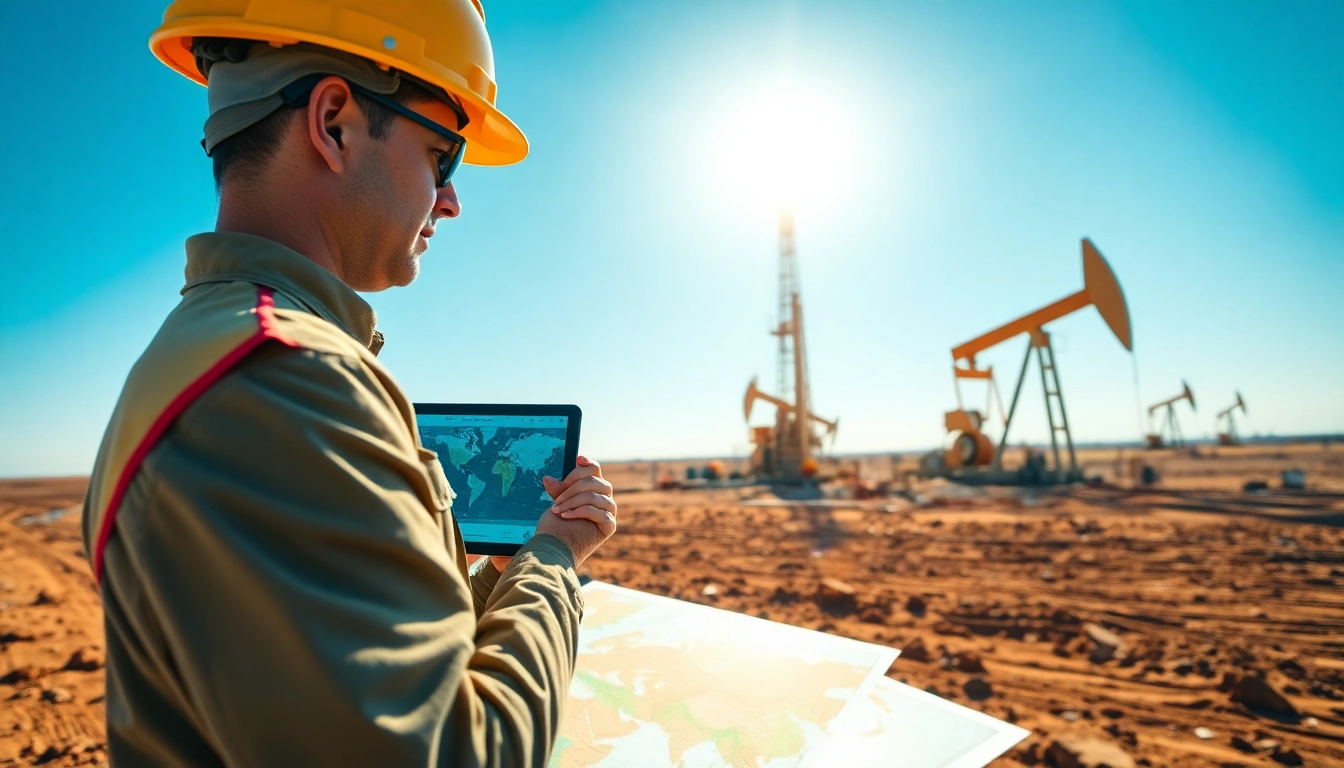Understanding Geosteering and Its Importance
In today’s fast-paced oil and gas industry, precision and efficiency are paramount. www.geosteeringvision.com offers insights into the crucial practice of geosteering—an innovative technique that optimizes drilling processes by ensuring that wells are drilled in the most productive areas of a geological formation. This comprehensive article will delve into the various aspects of geosteering, including its definitions, importance, essential technologies, best practices, challenges, and future trends.
What is Geosteering?
Geosteering is the art and science of directing drill bits in real-time during the drilling process. It allows drilling teams to adjust and optimize the trajectory of the wellbore based on real-time data acquired from downhole measurements. This method is particularly critical in unconventional reservoirs where the target formations may be thinner or have complex geological features.
The Role of Real-Time Data in Geosteering
Data-driven decisions lie at the heart of geosteering. Real-time data, including geological, geophysical, and petrophysical information, plays a vital role in guiding the drilling process. Various tools and technologies currently enable drilling engineers to continuously monitor the status of the drill bit and surrounding formations, allowing immediate adjustments to be made, thereby reducing the risk of costly mistakes and improving overall efficiency. The automation and integration of data systems have transformed how operators approach drilling, making precision targeting possible.
Benefits of Geosteering in Oil and Gas Exploration
The advantages of implementing geosteering techniques are numerous:
- Improved accuracy: By utilizing real-time data, geosteering allows for precise placement of the wellbore, maximizing hydrocarbon recovery.
- Risk reduction: Enhanced monitoring and the ability to react to unexpected geological conditions help mitigate risks associated with drilling.
- Cost efficiency: Optimizing the drilling path leads to lower operational costs, as it reduces the time spent drilling unnecessary sections.
- Enhanced resource recovery: Staying in the productive zones of a reservoir results in more significant extraction of hydrocarbons, thereby maximizing return on investment.
Essential Technologies for Geosteering
The effectiveness of geosteering heavily relies on various advanced technologies that facilitate real-time data collection and analysis.
Geophysical Tools and Their Applications
Geophysical tools are critical for obtaining accurate subsurface images and understanding the geological features of the target area. Technologies such as seismic sensors, electromagnetic devices, and resistivity measurements are commonly employed. Seismic imaging techniques, such as 3D modeling, help visualize the structure, ensuring that the wells are placed in the optimal zones.
Data Acquisition Systems in Geosteering
A robust data acquisition system is essential for effective geosteering. These systems collect and transmit real-time data to engineers and geologists on the surface. Robust sensors and logging systems, integrated with drilling hardware, can provide immediate insights into the wellbore environment, assisting teams in making informed decisions on-the-fly.
Integration of AI in Geosteering Techniques
Artificial Intelligence (AI) has brought significant advancements in geosteering techniques. By leveraging machine learning algorithms, AI can analyze large volumes of geological data and identify patterns that human operators might overlook. This technology aids in predicting the behavior of the drilling environment and can suggest optimal drilling parameters, such as pressure and rate of penetration, thereby improving overall drilling performance.
Best Practices for Implementing Geosteering
For successful integration of geosteering into drilling operations, several best practices should be followed:
Choosing the Right Strategy for Your Project
Selecting the appropriate geosteering strategy is critical to achieving desired drilling outcomes. Factors such as geological complexity, reservoir type, and available technology must be evaluated to tailor the geosteering approach to the specific project. Collaborating with experts in the field can facilitate the development of customized strategies that align with organizational goals.
Collaboration Between Teams for Enhanced Performance
Effective communication and collaboration between drilling, geological, and engineering teams are essential for successful geosteering. Multi-disciplinary teams should work together to interpret data and make cohesive decisions. Regular meetings and data sharing can streamline operations and minimize discrepancies during the drilling process.
Continuous Monitoring and Feedback Loops
Incorporating continuous monitoring and establishing feedback loops allows teams to adjust strategies based on real-time performance. By assessing drilling metrics at regular intervals, operators can optimize performance, respond to unexpected challenges, and refine geosteering techniques. Employing analytical tools and dashboards to visualize drilling progress can support this process and drive better decision-making.
Challenges and Solutions in Geosteering
While geosteering presents many benefits, it is not without challenges. Understanding these obstacles and identifying solutions is essential for effective implementation.
Common Obstacles in Real-Time Geosteering
Some of the common challenges faced in real-time geosteering include:
- Data reliability: Inconsistent or incomplete data can impair decision-making and lead to inaccurate drilling trajectories.
- High costs: The technology and tools required for effective geosteering can be costly, creating barriers for smaller operators.
- Geological unpredictability: Unforeseen geological features can complicate drilling and increase risks, posing challenges for even the most experienced teams.
Strategies to Overcome Technology Limitations
To mitigate these challenges, operators can adopt several strategies:
- Investing in quality data systems: Utilizing advanced data acquisition and management systems can enhance data accuracy and reliability.
- Implementing cost-effective solutions: Smaller operators can partner with technology providers to access advanced tools without incurring prohibitive expenses.
- Conducting thorough geological surveys: Comprehensive pre-drilling surveys can inform drilling teams of potential complications, allowing for better planning.
Case Studies: Successful Geosteering Applications
Many successful geosteering projects showcase the benefits of this technique. In one notable case, a drilling organization was able to increase hydrocarbon recovery by 15% by precisely geosteering their wells within a complex geological field. This case illustrates how optimal well placements can drastically influence the yield and profitability of oil exploration projects.
Future Trends in Geosteering Technologies
The landscape of geosteering is continually evolving, influenced by advancements in technology and the ever-changing demands of the oil and gas industry.
Emerging Trends Affecting the Oil and Gas Industry
As operators seek more efficient and sustainable drilling methods, trends such as automation and digitalization are gaining traction. Emerging technologies, including blockchain for enhanced data integrity and real-time analytics for instant decision-making, are anticipated to revolutionize geosteering practices.
The Advancement of Remote Sensing Technologies
Remote sensing technologies are also poised to make significant impacts on geosteering. Applications of drones and satellites for surveying and mapping geological formations can aid in the pre-drilling phases, ensuring informed decision-making. By integrating remote sensing data into geosteering workflows, operators can enhance their understanding of the drilling environment, leading to better outcomes.
Preparing for Changes in Resource Exploration
As the energy landscape shifts towards more unconventional resources and renewables, geosteering will be critical in exploring new horizons. Companies that strategically invest in advancing their geosteering capabilities will be better positioned to adapt to these changes, capitalizing on technology to improve extraction processes and resource management.
In conclusion, geosteering is not merely a technological advancement within the oil and gas industry—it represents a paradigm shift towards more efficient and effective drilling practices. By understanding its principles, leveraging essential technologies, and adhering to best practices, operators can ensure that they stay at the forefront of the industry and maximize their resource exploration potential.



